I spent three nights in Downtown Chicago. Every local I spoke to would proudly say, “There’s no place like Chicago in the summertime” and I was going to find out why. Upon arrival, my body experienced a change of weather shock. The air was hot and humid. I certainly would need to keep myself well-hydrated.
Music
The cold winter months keep Chicago dormant so once the warm sun hits, the new energy of Chicago comes alive. This is greatly felt in the music scene. Throughout the year you can always find great live music in small and large venues all over Chicago. However, during the summer, Chicago explodes with outdoor music festivals from Electronica to the Blues. Almost every weekend you can find a different festival. Downtown at Millennium Park’s Jay Pritzker Pavilion, an outdoor venue, you can enjoy classical music almost every evening during the summer for free. People are just hanging out, some have picnics. See schedule.
I had the pleasure of listening to some Blues at a local venue just outside of the downtown area called Kingston Mines. Two stages were set up for two bands to switch off playing, sometimes they played at the same time. The playlist at one stage included many cover songs with a Blues twist for people to dance and the other was more modern Blues. My favorite was when the classic style of Blues was performed. The venue was a dive bar and a musical gem. Here’s a list of some of the music festivals happening in Chicago during the summertime as well as indoor music venues.
Outdoor Music Festivals
- Lollapalooza at Grant Park
- North Coast Music Festival at Union Park
- World Music Festival Chicago at various venues
- Chicago Blues Festival at Grant Park
- Pitchfork at Union Park
- Spring Awakening Festival at Soldier Field
- Chicago Jazz Festival at Grant Park, Cultural Center, and Millennium Park
- Chicago Gospel Music Festival
Indoor Music Venues
- Andy’s Jazz
- Buddy Guy Legends
- Blue Chicago
- Chicago Blues Bar
- Chicago Symphony Orchestra
- Kingston Mines
- Harris Theater
- House of Blues
- Howl at the Moon
- Lyric Opera of Chicago
- The Redhead Piano Bar
Tours
The birds-eye view of the city is one way to marvel at Chicago’s architecture but the best view is from the water. An array of architectural boat tours are offered downtown. I looked at a few websites until I came across one that provided wheelchair access info and with this, I made my pick. The company is called Wendella* and you can choose from a 60-minute river tour or a 90-minute river and lake tour. I decided on the 90-minute one.
At check-in, my friend, who is also in a chair, and I ran into some snags. We went to the company’s listed address. The gal working the gate was an absolutely lovely woman but new. To get down to the dock from the gate is a flight of fifty or more stairs and the gate attendant did not get the run-through on where the accessible route was. I knew there was an elevator, as stated on the company’s website, I just didn’t know exactly where it was located. After much discussion on radios and one incorrect elevator attempt, we were escorted to the right elevator by another attendant. The correct elevator is not the one located inside Trump Tower nor the one closest to the Wendella gate just past the Wrigley Building. No, the correct one is located on the far side of the Trump Tower near the Wabash Street Bridge. Follow the pathway in front of Trump Tower that aligns with the river and it will lead you directly to the correct elevator.
Once on the dock, we used the ramp to board us on the top deck. The seating was open and every chair removable so you could take your pick on where to sit; we choose the edge. The top deck was completely exposed to the sun, with absolutely no shade, and although I enjoyed getting some rays, my friend got a little overheated so bring an umbrella if shade is needed. Below the top deck is a bar where you can purchase a beer, cocktail, or water. Since there was no access to the lower level, we asked an able-bodied person to assist us in getting some water. The MC of the tour was very professional and knowledgeable about the architecture seen along the way along with historical facts about the city.
*Note: Wendella built an accessible ticket stand at the bottom of Trump Tower, which can be accessed by either elevator mentioned above. Also, two new vessels will be available when this construction is completed with elevators to the shaded lower deck and bar.
Museums
If you are looking to spend some time gallivanting in some world-class museums then head to the Chicago Museum Campus. About 57 acres have been set aside for three museums surrounded by park space right on Lake Michigan. At the end of the street is Adler Planetarium, a hands-on museum that allows you to explore the universe. This planetarium was the first in the West Hemisphere and reportedly the oldest in existence today. Wheelchair users can only enter through the South Entrance, everywhere else has stairs. The door opens with a push of a button and this entrance is also where you get your tickets. Three elevators are located inside to take you to the additional levels. There are three theaters and all are wheelchair accessible. One called the Definiti Space Theater is located on the ground floor along with other informational displays, some including videos, about the universe. The biggest is the Atwood Sphere (Chicago’s oldest planetarium), which was in 1913 and is 15 feet in diameter with 692 holes drilled through its metal surface, allowing light to enter and show the positions of the brightest stars in the night sky (as it appeared in 1913). The Atwood Sphere is wheelchair accessible. The Definiti Space Theater has seven open spaces for wheelchairs and about seven more seats can be removed if needed with advanced notice.
The upper level has focused information on just our solar system as well as the largest theater, the Grainger Sky Theater, which is visible from the outside of the museum and is also wheelchair accessible. The best seats in this theater are in the middle, in which there are two open spaces for wheelchairs. More are placed on the outside rim and in general, all can be removed with advance notice. The Universe Theater is located on the lower level of the Adler. Visitors in wheelchairs are able to access it by asking one of the Mission Specialists (the Adler employees in the blue jackets), who will then escort them down in the elevator. Both theaters are the reason for visiting the planetarium because the way they were designed creates an educational ride that at many times, makes you feel like you are flying through space. The layout of the museum was very open with smoothly paved walkways. Restrooms along with a café are located on the mid-level. For adults 21 and over, come to the planetarium on the third Thursday of the month to experience Adler After Dark and explore the museum along with telescope viewing and a cash bar.
Also along Lake Michigan in Museum Campus is the Shedd Aquarium. Wheelchair access to the aquarium is on the southwest side. Right next to Shedd Aquarium is a small courtyard park where accessible restrooms and food, like hot dogs, pretzels, and ice cream can be found and on the other side is the Field Museum of Natural History. The Field Museum has a permanent collection and traveling exhibits but the most prized piece of the collection is the world’s oldest living Tyrannosaurus Rex. She was named Sue but a recent finding is leading scientists to believe Sue is a boy. Whether boy or girl, the dinosaur died at twenty-eight and will make you feel really small.
Across the street from the Field Museum is Soldier Field home to the Chicago Bears if interested in a football game. Now a good stroll away through Grant Park along Michigan Ave is the Art Institute of Chicago. The ramp into the museum is to the left of the main entrance and inside you will find smooth marble to roll around on and elevators to take you to the different floors. You will also find automatic doors and a nice size-accessible restroom. I had wanted to see a Chicago White Sox baseball game but it didn’t work out; check out the accessibility info for Wrigley Field. In general, since Wrigley Field is so old, wheelchair access is lacking compared to the newer stadiums but may still be worth a visit for you. Finally, about twenty minutes away from the Museum Campus is the Museum of Science and Industry. Like the Adler Planetarium, the Museum of Science and Industry is very hands-on learning exploring topics such as energy, agriculture, and physics. A number of exhibits are permanent but there are always a few new ones to check out too. There are also videos shown in Chicago’s only five-story-dome-wrap-around theater.
Parks and Beaches
No matter what city I go to, I always want to check out the local park. In Downtown Chicago that means Grant Park, 319 acres of open space bordering Lake Michigan with accessible paved walkways all around. In addition to the Art Institute of Chicago and Museum Campus, as noted above, Grant Park also features iconic landmarks. One of these is the Buckingham Fountain, one of the largest fountains in the world, a representation of Lake Michigan and a symbol of Chicago. A 24.5-acre section on the northwestern side of Grant Park is known as Millennium Park.
The Jay Pritzker Pavilion (discussed above) will perhaps be the first thing to catch your eye but then surely it will be the giant silver bean art piece that mirrors the city’s skyline. The bean is called Clouds Gate and lots of photos are taken here. You may even catch dancers practicing. This is Chicago’s modern landmark while Buckingham Fountain is the classic rendition. The Crown Fountains are right near Cloud’s Gate, which are two interactive modern pieces of art. When it is warm out, the Crown Fountains are filled with children and some adults who want to wade their feet to cool off. Near these fountains are a few cafes and wheelchair accessible public restrooms. Just behind the Jay Pritzker Pavilion is Lurie Garden with a beautiful display of flowers, grasses, and trees. The pathways have all been made to be wheelchair accessible. Also, check out the free Movies in the Park series during the summer.
What I was pleasantly surprised by was finding not just one but a few accessible walkways to get down onto the beach. After researching I’ve found more and there are tons of beachfront walkways along the lake as well. Downtown Chicago was reported to have nineteen miles of paved park walkways. Some of the beaches that have accessible beach mats also have beach wheelchairs. Ohio Street Beach is one beach with an accessible platform on the sand as well as Northerly Island Park (near the Adler Planetarium) and North Avenue Beach. See a complete list of wheelchair accessible beaches in Chicago.
Additional Attractions
By far the most popular attraction in all of Illinois is Navy Pier, which is found in downtown Chicago and features carnival games and rides as well as shops and chain restaurants. What’s particularly fun about Navy Pier is that a fireworks display takes place every Wednesday and Saturday from Memorial Day to Labor Day. That’s a lot of summer fireworks and can be viewed in many downtown locations.
Chicago is renowned for its diversity of architecture and one way to experience this is from the observation deck in the John Hancock Building or Willis Tower (formerly Sears Tower). At the Willis Tower, you can roll on the sky deck, a clear window floor that allows you to see straight down to the city below. At the John Hancock Building, there is an area where you can go outside safely and feel the intensity of the Chicago winds from such a high height. Both observation decks have historical information displayed and both overcharge for this experience. The less expensive way to enjoy this view is to go to the Signature Room restaurant and bar on the 95th floor of the John Hancock Building for a drink or just to take some pictures.
- Lincoln Park Zoo – Free and open 365 days of the year.
- Magnificent Mile – High-end shops and restaurants on Michigan Avenue
Getting around Downtown Chicago: Rolling, Taxis, Bus System & the CTA
While staying in Downtown Chicago, I mainly took the streets by the wheel. In other words, I tried not to use much public transportation. I like to get a feel for what city access is like when I am just wheeling around. On this trip, I was with a friend who is super quadriplegic, someone who is a quad but uses a manual wheelchair. For the most part, Downtown Chicago is at a relatively flat grade, especially the closer you get to the water but some blocks run at a slight incline which requires muscles or a push while traveling upwards. 98% of the curbs have cutouts but I did run into the occasional one that was not. The sidewalks themselves were all in great condition in the downtown area; it was just the transitional curb cutout or the street itself that would occasionally be in poor condition.
In some curb cutouts, potholes were only partially filled in while others remained completely open as booby traps for a wheelchair traveler so keep this in mind. Frankly, you can’t miss them, so take your time crossing over them. Some parts of the Downtown Chicago area are split between levels. There was a time my friend and I needed to make a left onto a street but found a flight of stairs restricting our access. When we came across this, we looked for a nearby hotel or parking garage that looked probable to have an elevator to get us to the lower level. Some sections of Chicago have even three levels. Read more about the multi-layer streets of Chicago and where they are.
Getting around using Chicago’s public transportation is pretty wheelchair friendly. The water taxis, unfortunately, are not accessible but the regular ones are. However, some are better than others when it comes to access, service, and promptness and a few taxis are capable of transporting two wheelchair users. Read wheelchair access information on taxis in Chicago. There are two trains and two bus systems in Chicago that are popular ways to get around the city and suburbs. Read access information on Chicago’s trains and buses.

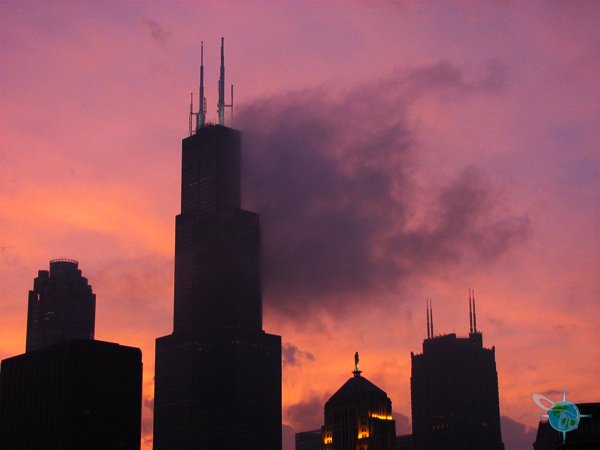
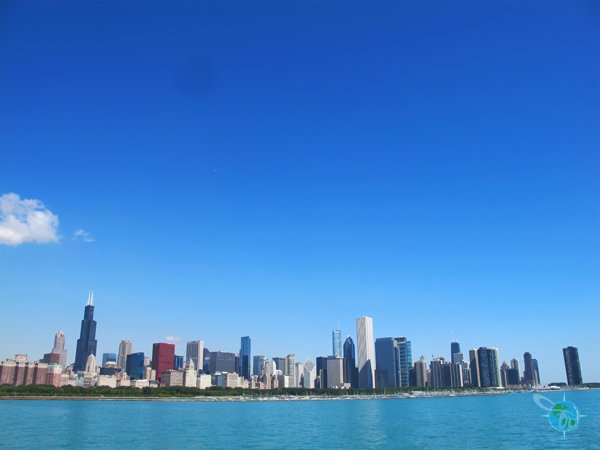
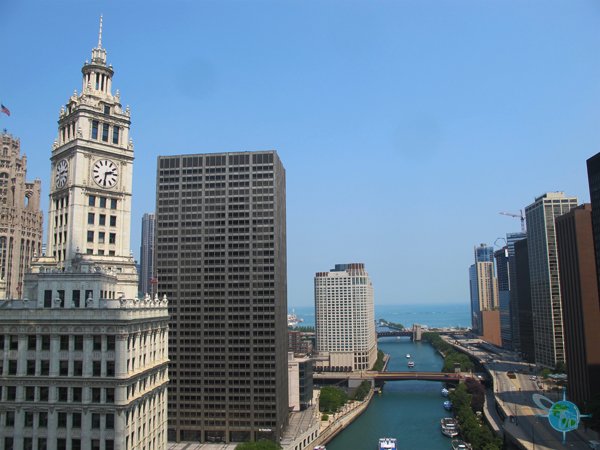
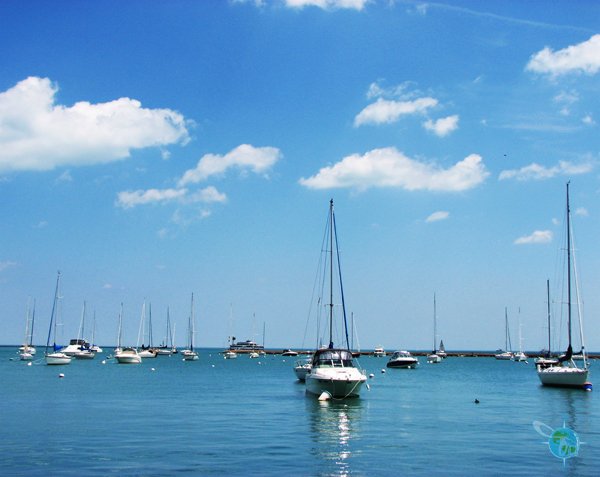
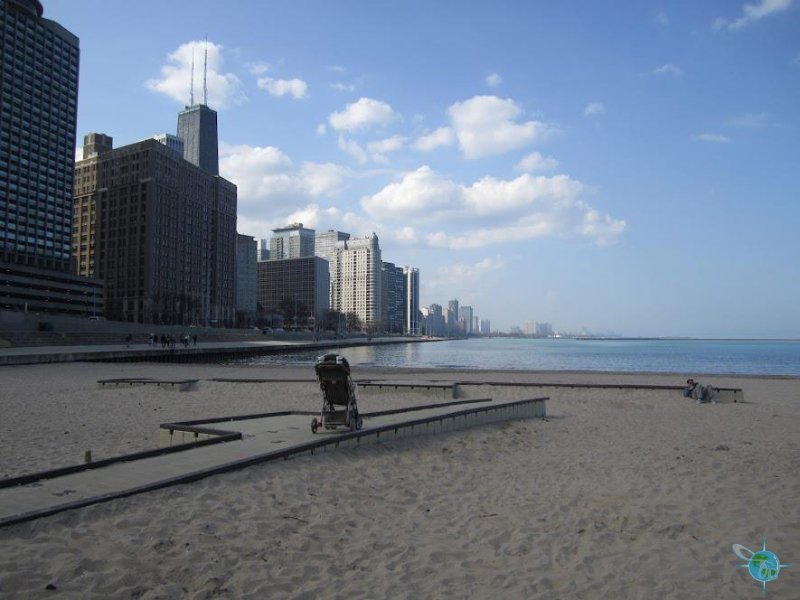
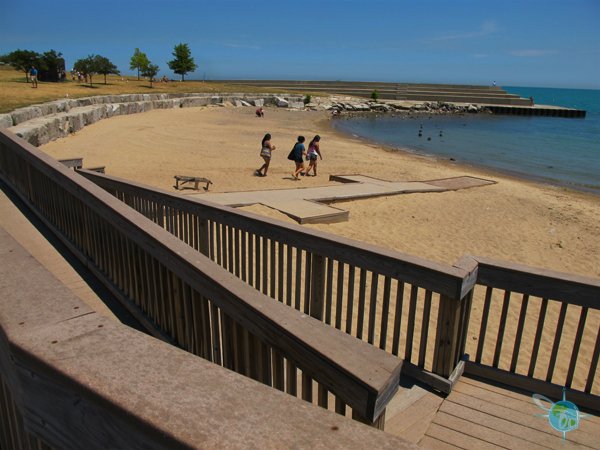
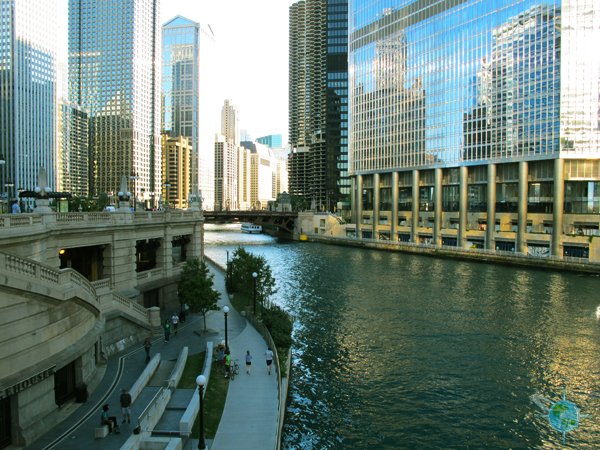
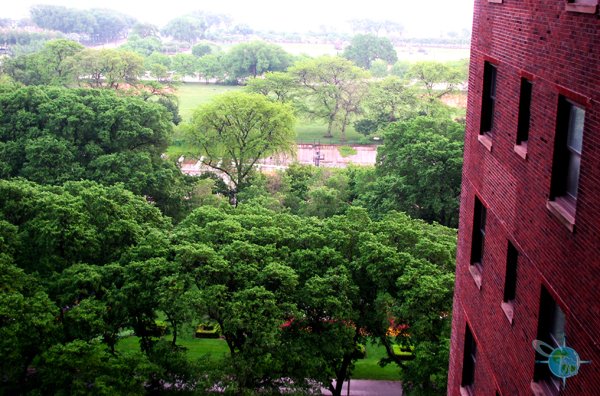
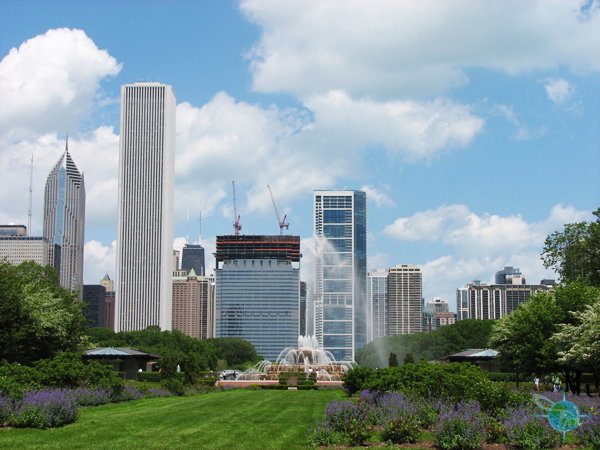
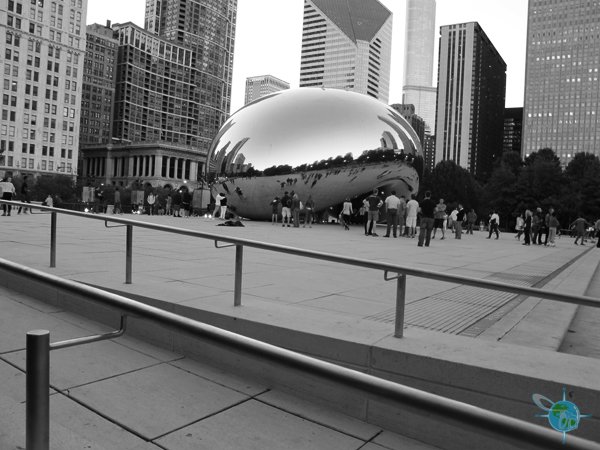
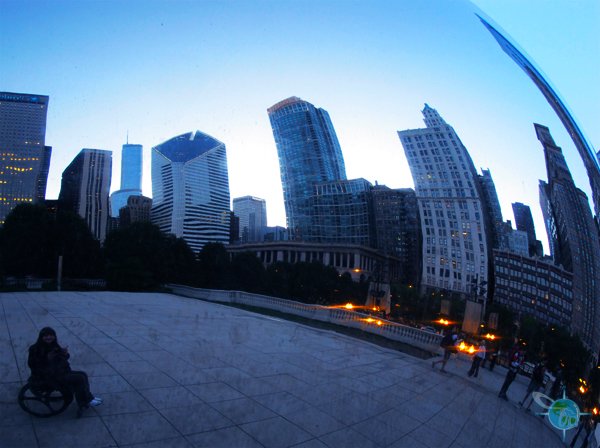
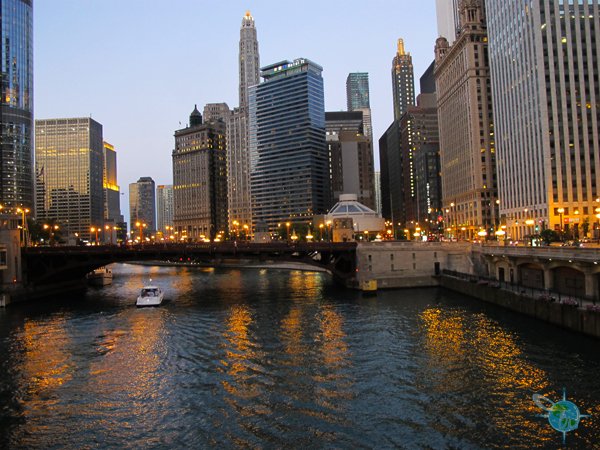
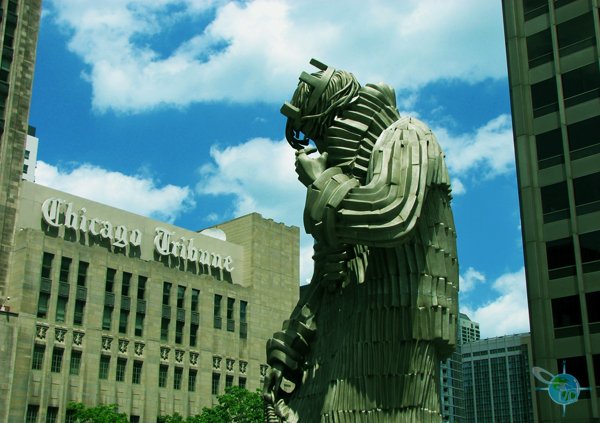
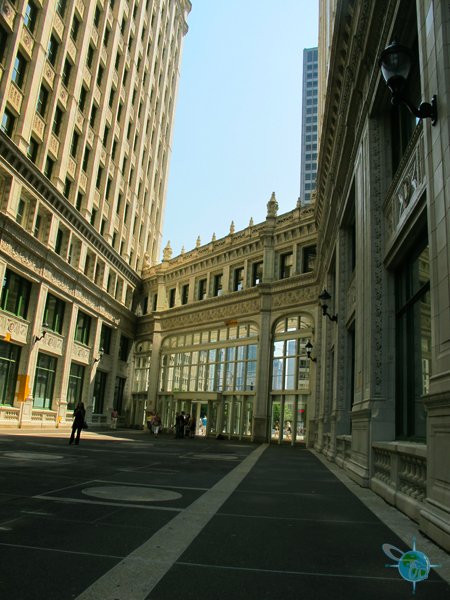
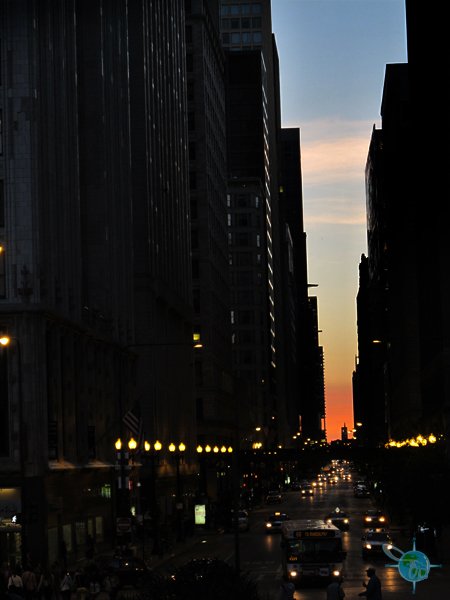

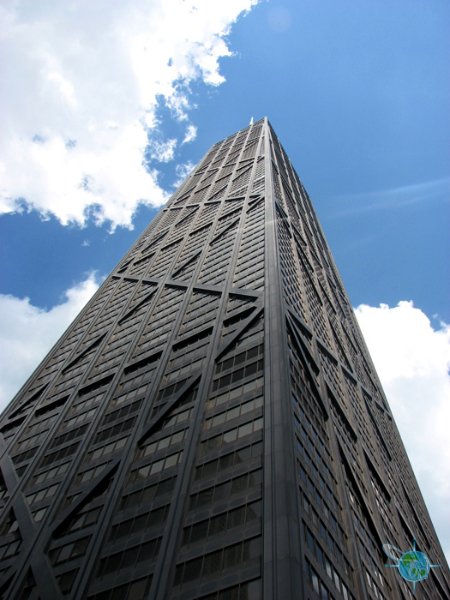
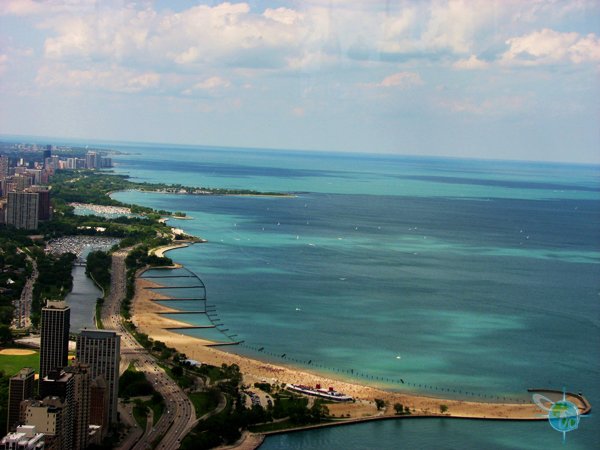
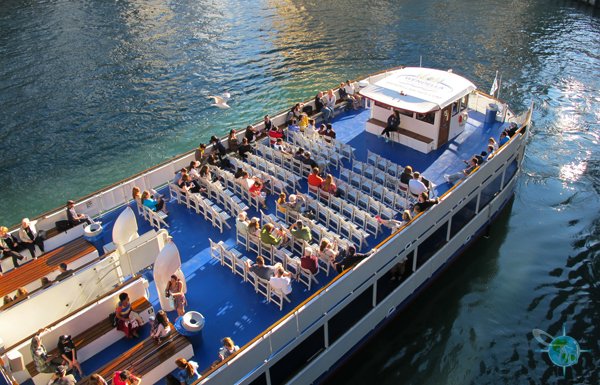
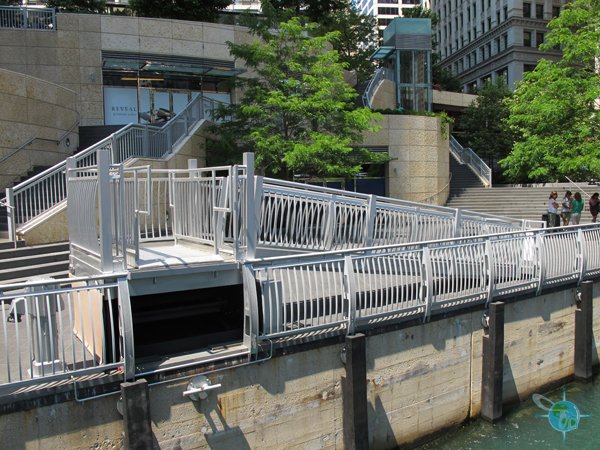
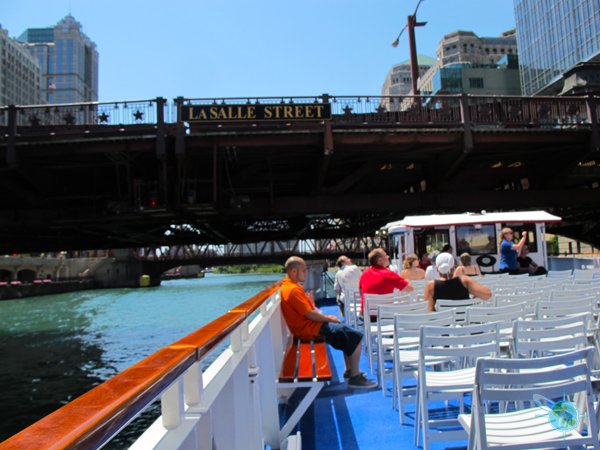
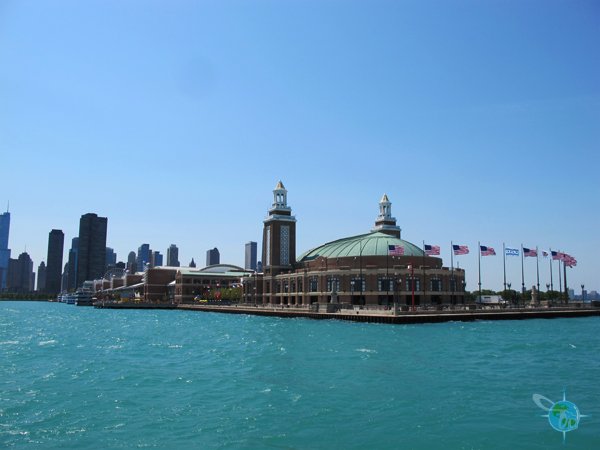

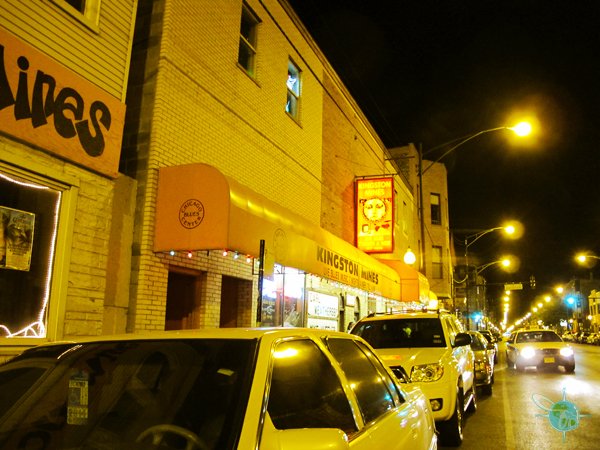
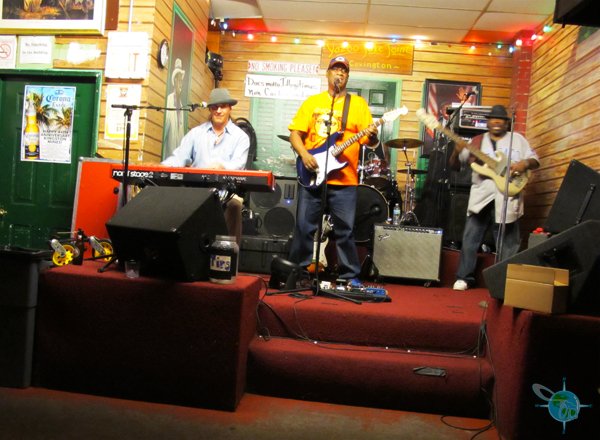
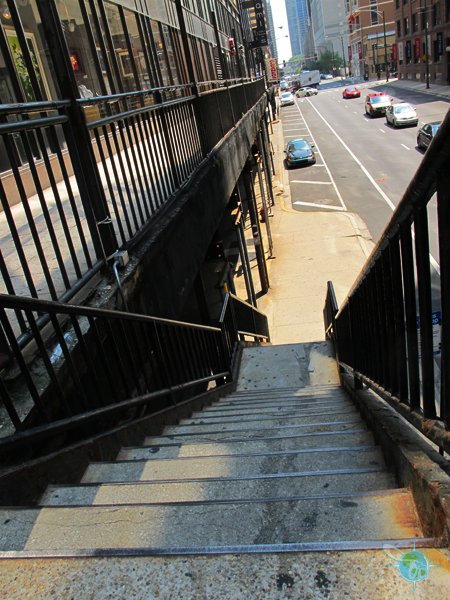
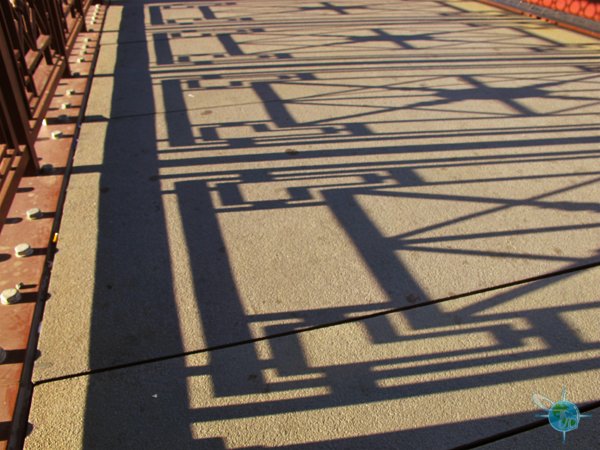
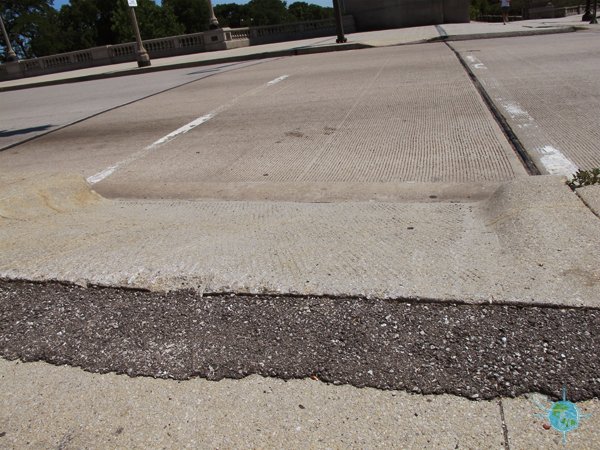
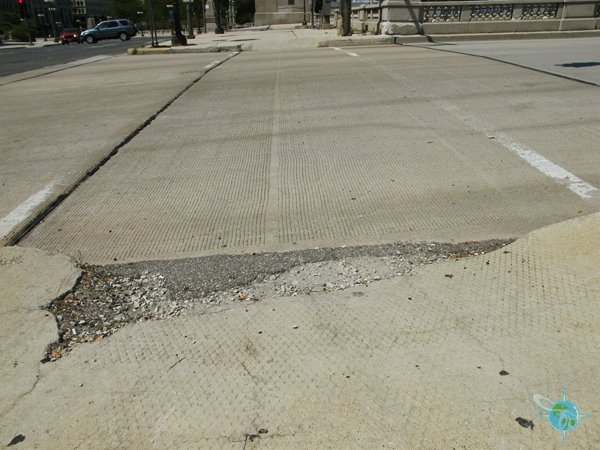

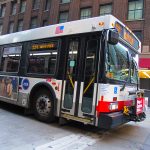

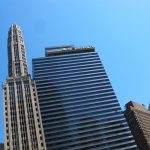

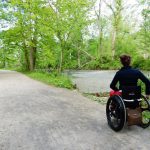
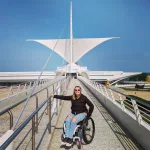






Thank you for your thorough review of your visit to Chicago. My husband and I are planning to visit this summer and your comments were very helpful. Do you have any hotel or B&B suggestions? Restaurants? I use a manual wheelchair, but I can walk a bit and use stairs with assistance.
You are very welcome! There is so much good food in Chicago. Anything in particular? I wrote a few down. I must say that if your like pork then the Purple Pig is a must. I have a few others but access all varies of course but REALLY good food. I got the local perspective. I stayed at Hotel 71, which was in a great location. The breakfast was really good here, well, all the food was.
Hi, do you know of any company that can take a wheelchair user plus 4 others and luggage to and from the airport to a downtown hotel?? Many thanks
Gaynor: Here is a link to an article on wheelchair accessible taxis. The back seat to some can fit 3 plus 1 more up front with the driver and then the wheelchair in the middle.
Broken foot. Do you know of a reasonably priced company to rent a wheelchair from in chicago for 4 days.
Hello!! I wanted to say thank you so much for your very thorough article!! It was thoughtful and the details are greatly appreciated. Truly, thank you for doing such a fine job. I live in Chicago and am doing research for a trip my boyfriend’s mom will be taking here, and your article has really helped.
good